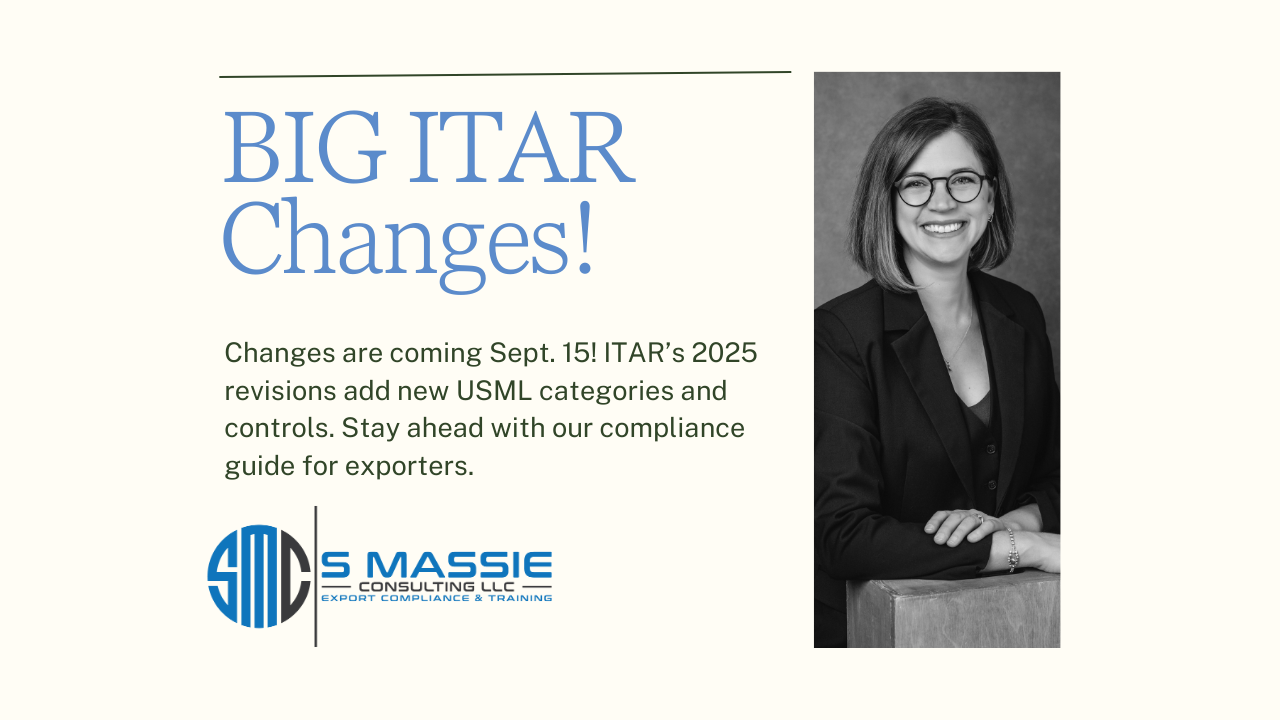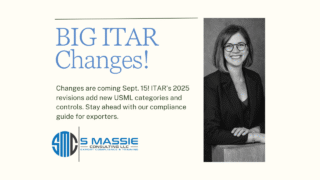Big changes to the International Traffic in Arms Regulations (ITAR) and the U.S. Munitions List (USML) are about to take effect – and not just for those already under ITAR.
The U.S. Department of State kicked off 2025 with an interim final rule for its ITAR Targeted Revisions that not only revises definitions and refines existing categories but also adds entirely new items to the USML, including advanced uncrewed maritime systems, next-generation gas turbine engines, and other emerging technologies that had not been previously controlled under ITAR.
With the September 15 effective date just around the corner, exporters, manufacturers, and compliance teams (especially those who may never have needed an ITAR license before) should review their classifications, update internal processes, and prepare for the most active ITAR rulemaking agenda in nearly a decade.
Overview of ITAR Targeted Revisions
The final rule, published in the Federal Register on August 27:
- Removes certain items no longer warranting ITAR control.
- Adds new items that provide a critical military or intelligence advantage.
- Refines language across multiple categories to improve clarity and precision.
- Supersedes and terminates the temporary modification to USML Category VIII from 2023/2024.
USML Categories Affected by the Revisions
II, IV, V, VII, VIII, IX, X, XI, XII, XIII, XIV, XIX, XX, XXI.
Key Definitions and General Updates in the Rule
- Added and alphabetized definitions in §121.0 for clarity, including terms like ECCN, EAR, DoD, and others.
- Defined “foreign advanced military aircraft” with specific criteria to guide category applications.
- Clarified that the USML describes defense articles and services providing critical military or intelligence advantages or inherently military functions.
- Emphasized the Department’s approach to maintaining the USML based on national security and foreign policy considerations.
Review USML Classifications Now
With the September 15 effective date, it’s essential for companies to review the USML categories relevant to their products. Even long-established classifications may shift, moving items into or out of ITAR jurisdiction, due to changes in category definitions, notes, and control criteria.
Even companies that do not export can be subject to ITAR regulations if they manufacture, assemble, or even handle an ITAR product or its technical data.
Awareness and classifications are key!
New Items Added to ITAR Control (and Where to Find Them in the USML)
The ITAR targeted revisions add several technologies that were not previously listed under ITAR. The table below shows the new additions and where to find them in the U.S. Munitions List:
| USML Category | Example of New Addition |
|---|---|
| Category XX – Submersible Vessels and Related Articles | Advanced uncrewed maritime systems with anti-recovery or extended range capabilities |
| Category XIX – Gas Turbine Engines and Associated Equipment | Next-generation gas turbine engines (e.g., XT900, XA-series, T901) and their specially designed parts |
| Category X – Personal Protective Equipment | Developmental exoskeletons funded by the U.S. Department of Defense |
| Categories II, IV, XI, XXI | Other emerging defense-related technologies that provide a critical military or intelligence advantage (review based on function) |
Transition Period and Licensing Guidance
The interim rule, published in January, included a 240-day delayed effective date, setting the implementation for September 15, 2025, to allow time for transition.
Exporters should review licensing requirements, verify whether items have shifted to Commerce control under the EAR, and submit commodity jurisdiction or classification requests as needed.
The full list of changes given in this Interim Rule can be found at: https://www.federalregister.gov/documents/2025/08/27/2025-16382/international-traffic-in-arms-regulations-us-munitions-list-targeted-revisions
Prepare Now for the ITAR Changes
This wave of regulatory action signals a turning point in ITAR enforcement and USML scope. With these clarity-enhancing updates now in place, compliance officers and exporters should act quickly.
At S Massie Consulting, we help companies navigate these shifts with confidence. If you’re unsure how to stay up to date or how these changes impact your products or compliance program, contact us today to get ahead (and stay ahead) as these rules go live.






